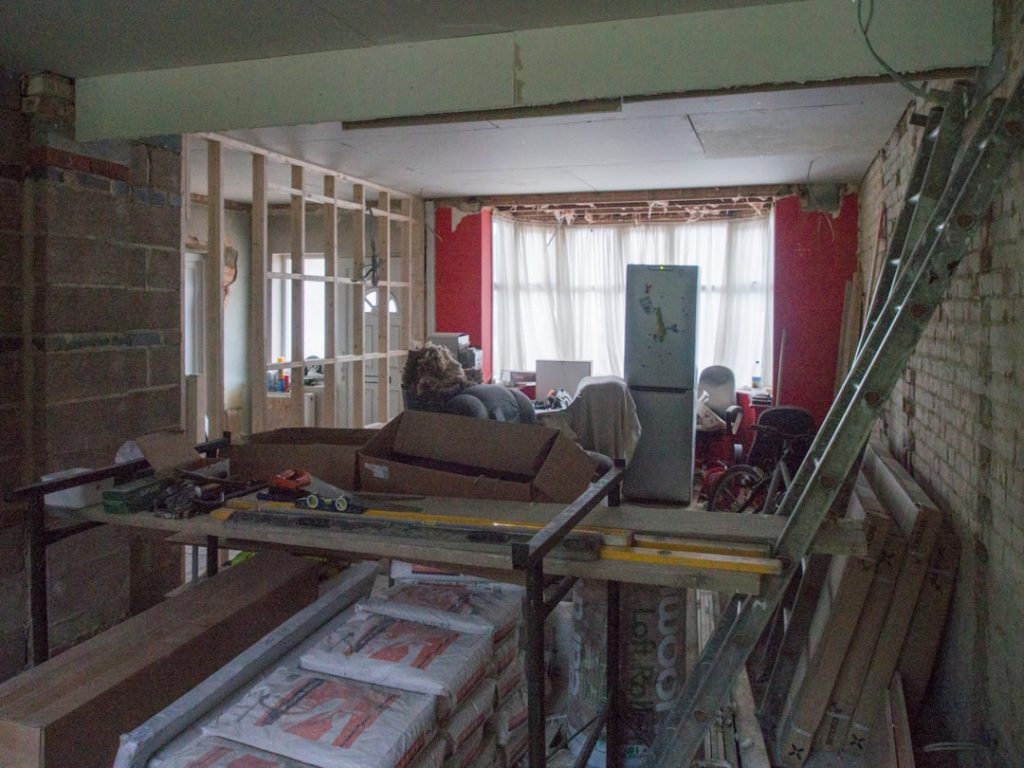The initial phase of any renovation project is critical, as it sets the foundation for the entire endeavor. Effective planning begins with a clear understanding of the goals and objectives of the renovation. Homeowners must ask themselves what they hope to achieve: Is it a more functional kitchen, an expanded living space, or perhaps an updated bathroom?
Defining these goals will guide the decision-making process and help prioritize tasks. Once the objectives are established, creating a detailed budget becomes essential. This budget should encompass not only the costs of materials and labor but also a contingency fund for unexpected expenses, which are common in renovation projects.
A general rule of thumb is to allocate an additional 10-20% of the total budget for unforeseen costs. In addition to financial considerations, planning involves a timeline that outlines each phase of the renovation. This timeline should account for the various stages of the project, from initial design to final touches.
Homeowners should also consider seasonal factors that may impact the renovation process, such as weather conditions that could delay outdoor work. Engaging in thorough research about local market rates for labor and materials can provide a more accurate picture of what to expect financially. By establishing a comprehensive plan and budget, homeowners can navigate the complexities of renovation with greater confidence and clarity.
Key Takeaways
- Careful planning and budgeting are essential for a successful renovation project.
- Selecting a reliable contractor ensures quality workmanship and smooth progress.
- Thoughtful design and layout improve functionality and aesthetic appeal.
- Choosing appropriate materials and finishes impacts durability and style.
- Understanding permits, regulations, and maintenance needs helps avoid legal issues and prolongs renovation benefits.
Finding the Right Contractor
Selecting the right contractor is one of the most pivotal decisions in any renovation project. A skilled contractor not only brings expertise and experience but also serves as a project manager who can coordinate various aspects of the renovation. To begin this process, homeowners should seek recommendations from friends, family, or online reviews to compile a list of potential candidates.
Once a list is established, it is crucial to conduct interviews with each contractor to assess their qualifications, experience, and approach to projects. During these discussions, homeowners should inquire about previous work, request references, and review portfolios to gauge the contractor’s style and capabilities. Moreover, it is essential to verify that the contractor is licensed and insured.
This protects homeowners from potential liabilities and ensures that the contractor adheres to local building codes and regulations. After narrowing down the options, obtaining detailed written estimates from multiple contractors can facilitate comparisons. These estimates should outline labor costs, material expenses, and timelines.
A good contractor will be transparent about their pricing structure and willing to discuss any concerns or adjustments needed to meet the homeowner’s budget. Ultimately, finding a contractor who communicates effectively and aligns with the homeowner’s vision can significantly enhance the renovation experience.
Design and Layout

The design and layout phase is where creativity meets functionality in a renovation project. This stage involves translating the homeowner’s vision into tangible plans that optimize space while reflecting personal style. Engaging with an architect or interior designer can be beneficial, as these professionals bring expertise in spatial planning and aesthetics.
They can help homeowners visualize their ideas through sketches or 3D renderings, allowing for adjustments before construction begins. Key considerations during this phase include traffic flow, natural light, and how different spaces will interact with one another. In addition to aesthetics, practical elements such as storage solutions and furniture placement must be carefully considered.
For instance, in a kitchen renovation, maximizing counter space while ensuring easy access to appliances is crucial for functionality. Similarly, in living areas, creating zones for different activities—such as lounging, dining, or working—can enhance usability. Homeowners should also think about how their design choices will impact their daily lives; for example, open floor plans may promote social interaction but could also lead to noise issues if not thoughtfully designed.
By balancing form and function during the design phase, homeowners can create spaces that are not only beautiful but also livable.
Materials and Finishes
| Material | Finish Type | Durability | Common Uses | Maintenance |
|---|---|---|---|---|
| Stainless Steel | Brushed | High | Kitchen appliances, countertops, fixtures | Wipe with mild detergent, avoid abrasive cleaners |
| Wood | Varnished | Medium | Furniture, flooring, cabinetry | Regular dusting, occasional polishing |
| Aluminum | Anodized | High | Window frames, outdoor furniture | Clean with water and mild soap |
| Glass | Frosted | Medium | Windows, partitions, tabletops | Use glass cleaner, avoid scratches |
| Concrete | Polished | High | Flooring, countertops, walls | Seal periodically, clean with pH-neutral cleaner |
Choosing the right materials and finishes is a vital aspect of any renovation project that significantly influences both aesthetics and durability. The selection process begins with understanding the desired style—whether it be modern, traditional, rustic, or eclectic—and then identifying materials that align with that vision. For example, if a homeowner desires a contemporary kitchen, they might opt for sleek quartz countertops paired with minimalist cabinetry.
On the other hand, a farmhouse-style renovation may call for reclaimed wood accents and vintage-inspired fixtures. Durability is another critical factor when selecting materials. Homeowners should consider how different finishes will hold up over time under various conditions.
For instance, flooring choices should take into account foot traffic levels; hardwood may be ideal for low-traffic areas while tile or luxury vinyl may be better suited for high-traffic zones like entryways or kitchens. Additionally, environmental considerations are increasingly influencing material choices; many homeowners are opting for sustainable options such as bamboo flooring or recycled glass tiles. By carefully selecting materials that balance style, durability, and sustainability, homeowners can ensure their renovations stand the test of time.
Permits and Regulations
Navigating permits and regulations is an often-overlooked aspect of home renovations that can have significant implications for project timelines and costs. Before any construction begins, homeowners must familiarize themselves with local building codes and zoning laws that govern renovations in their area. These regulations are designed to ensure safety and compliance with community standards; failing to adhere to them can result in fines or even having to undo completed work.
It is advisable for homeowners to consult with their contractor or local building department to determine which permits are necessary for their specific project. The permit application process can vary widely depending on the scope of work being undertaken. For minor renovations like painting or replacing fixtures, permits may not be required; however, larger projects such as structural changes or additions typically necessitate detailed plans submitted for approval.
Homeowners should be prepared for potential delays during this phase as permit approvals can take time. Understanding these requirements upfront can help streamline the renovation process and prevent costly setbacks down the line.
Project Timeline

Establishing a realistic project timeline is essential for keeping a renovation on track and managing expectations. The timeline should outline each phase of the project—from demolition to final inspections—and include estimated durations for each task. Homeowners should work closely with their contractor to develop this timeline, taking into account factors such as material lead times and labor availability.
It is important to remember that renovations often encounter unforeseen challenges that can cause delays; therefore, incorporating buffer time into the schedule can help mitigate frustration. Communication is key during this phase; regular check-ins with the contractor can provide updates on progress and any adjustments needed to stay on schedule. Homeowners should also be prepared for potential disruptions to their daily lives during construction—such as limited access to certain areas of the home or noise from ongoing work.
By maintaining flexibility and open lines of communication throughout the project timeline, homeowners can navigate challenges more effectively while ensuring that their vision comes to fruition.
Communication and Collaboration
Effective communication and collaboration between homeowners and contractors are paramount throughout the renovation process. Establishing clear lines of communication from the outset helps ensure that everyone involved understands expectations, timelines, and responsibilities. Regular meetings or check-ins can facilitate discussions about progress, address any concerns that arise, and allow for adjustments to be made as needed.
Utilizing digital tools such as project management software or shared online platforms can enhance collaboration by providing a centralized location for updates, documents, and schedules. Moreover, fostering a collaborative environment encourages input from both parties regarding design choices and problem-solving strategies. Homeowners should feel empowered to voice their ideas while also being receptive to professional advice from contractors who have experience navigating similar projects.
This partnership approach not only enhances the quality of the final outcome but also contributes to a more positive renovation experience overall.
Post-Renovation Maintenance
Once the renovation is complete, attention must shift toward post-renovation maintenance to ensure that new spaces remain functional and aesthetically pleasing over time. Homeowners should develop a maintenance plan that outlines regular tasks such as cleaning schedules for different surfaces, checking for wear on finishes, and seasonal upkeep like gutter cleaning or HVAC servicing. Understanding how various materials require different care is crucial; for instance, natural stone countertops may need periodic sealing while hardwood floors might require specific cleaning products to avoid damage.
Additionally, homeowners should keep documentation related to warranties for appliances or materials used in the renovation; this information can be invaluable if issues arise down the line. Establishing a routine maintenance schedule not only prolongs the life of renovations but also helps preserve property value by preventing minor issues from escalating into major repairs. By prioritizing post-renovation care, homeowners can enjoy their newly renovated spaces with peace of mind knowing they are well-maintained for years to come.




